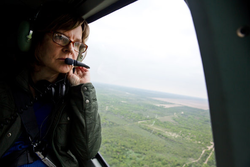November 1, 2014
The United States has caught more than 68,000 children crossing the United States border—primarily via the Rio Grande Valley into Texas—in the past year, doubling last year’s number. The majority of children are coming from Honduras, Guatemala, and El Salvador. In fact, less than a quarter of the children caught are from Mexico. The increase of children from these Central American countries began in 2012. Violence, family reunification, and poverty are the main reason for this surge. For those children from Honduras, there is an especially strong correlation between the increase in children caught at the border with an increase in homicides.
Due to the William Wilberforce Trafficking Victims Protection Act of 2008 (“TVPRA”), children from Central America have a longer before their deportation hearing than those children from contiguous countries (i.e. Canada and Mexico). Unlike children from Mexico, a Border Patrol officer does not have the authority to make an on the spot determination as to whether a Central American child can stay in the country.

The unequal treatment of children from Mexico versus children from Central America has draw criticism from both sides of the political isle leading to the President to take a strong stance on combatting this influx. In July, the President Obama White House urged an increase in funds—to the tune of just over $2 billion—to strengthen border security, expedite immigration case resolution, and deal directly with the humanitarian issues occurring in the countries of origin. As with just about every policy and budgetary recommendation this White House has made, this recommendation was met with hostility both on the part of liberals and conservatives.
Liberals, on one hand, believe that the White House’s proposal upsets due process leaving thousands of children vulnerable. Conservatives, on the other hand, believe this planned action is too little too late. Regardless of your political stance on the issue, the larger underlying challenge is the United States’ role in this crisis and the potential responsibility it owes to mitigating its effect.
Honduras’s President Juan Orlando Hernandez has been quite vocal as to the United States’ hand in the immigration crisis. The demand for drugs stemming from the United States has lead to an increase in violence and a decrease in roads for opportunity. The illicit demand for drugs in the United States, no matter how frowned upon by the government and many citizens, has, in the opinion of many, has created a duty to address the humanitarian impacts.
The United States has the unique challenge of striking a balance between providing appropriate due process to those children who have made the journey to the United States, working with the immigrant’s countries of origin to address the underlying humanitarian issues, and corresponding the rate of deportation with the progress made in addressing humanitarian issues. Perhaps easier said than done.
Alicia Guber is a 3L at the University of Denver Sturm College of Law and the Editor in Chief of the Denver Journal of International Law and Policy.

